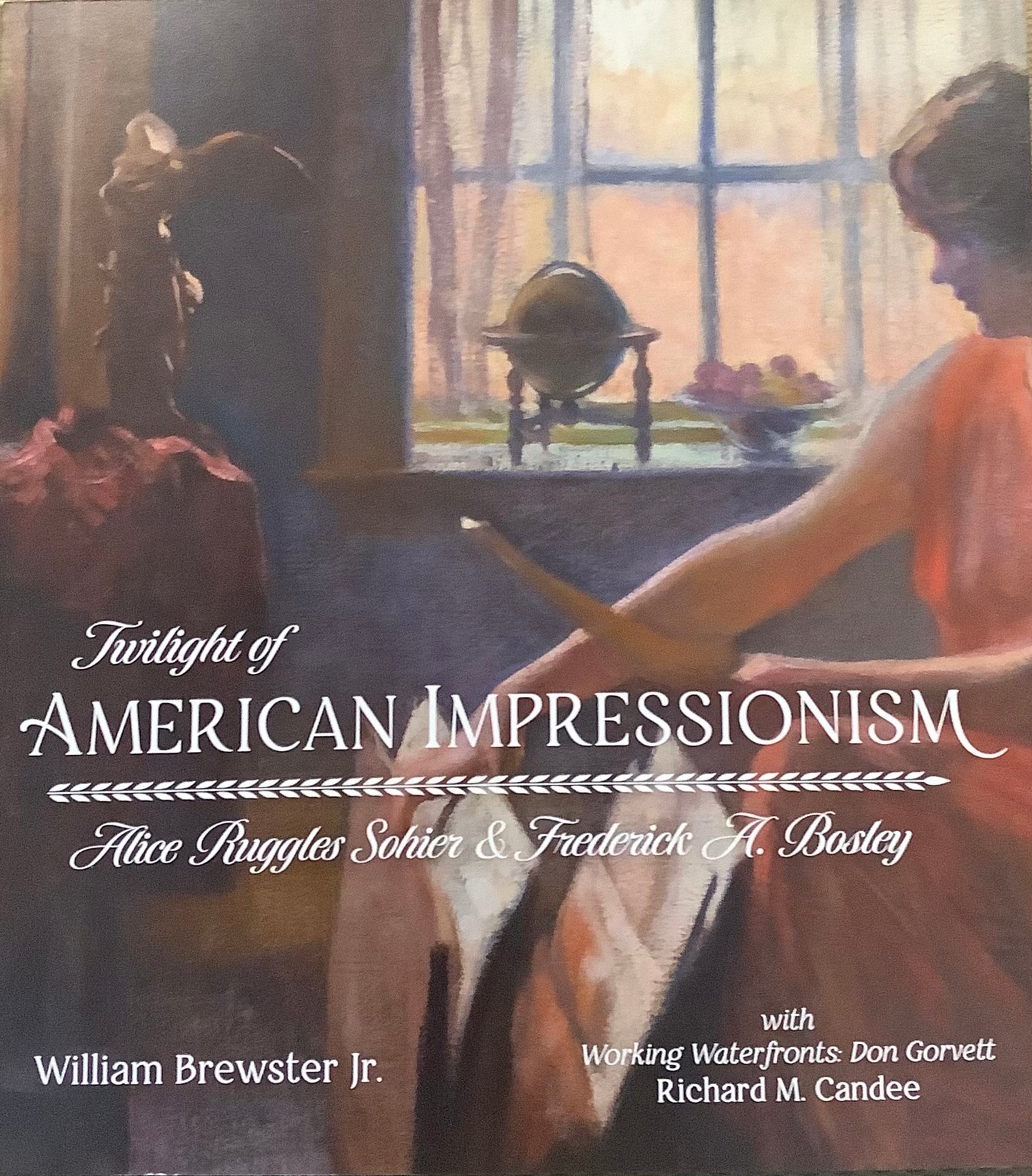Portsmouth Marine Society
Twilight of American Impressionism Catalogue
Twilight of American Impressionism Catalogue
Couldn't load pickup availability
Each artist faced challenges common to Boston School artists as they pursued a traditional career in an art world that was shifting dramatically to more modern modes as the twentieth century progressed. Sohier and Bosley, after enjoying the relative prosperity of the 1910s and 1920s, also had to cope with the effects of the Great Depression in the 1930s. Each also confronted individual obstacles. Alice had to navigate her career and family through a world dominated by men, and Frederick suffered from bouts of depression, especially after his resignation as director of the Museum School in 1931, a decision triggered by the institution’s shift to modernism.
Don Gorvett was born in Boston in 1949 and raised in Cambridge and Somerville. Much of his youth was spent at the seashore, swimming, fishing, and observing fishing-town industry. Don’s family moved to Burlington, Massachusetts, where high school art instructor Elinor Marvin discovered his talents. He received from Mrs. Marvin an extraordinary education, focused on drawing, graphic arts, and theatrical set design. He attended the School of the Museum of Fine Arts, Boston, and, after graduation, moved to Gloucester, Massachusetts, to pursue a career in painting. With the encouragement of Elinor Marvin, and the support of Annabelle Lewis, a longtime summer resident of Ogunquit, Don began his annual summer-long painting excursions to Ogunquit, Maine. While in Gloucester, Don was introduced to Mrs. Buswell, heiress to the Jacobean-style Stillington Hall estate. She offered the rooms in the estate’s theater for the artist to live in. There Don set up his first etching press and began a series of large-scale woodcuts based on Richard Wagner’s The Ring of the Nibelung. He also created a series of drypoint etchings recording the Gloucester waterfront.


